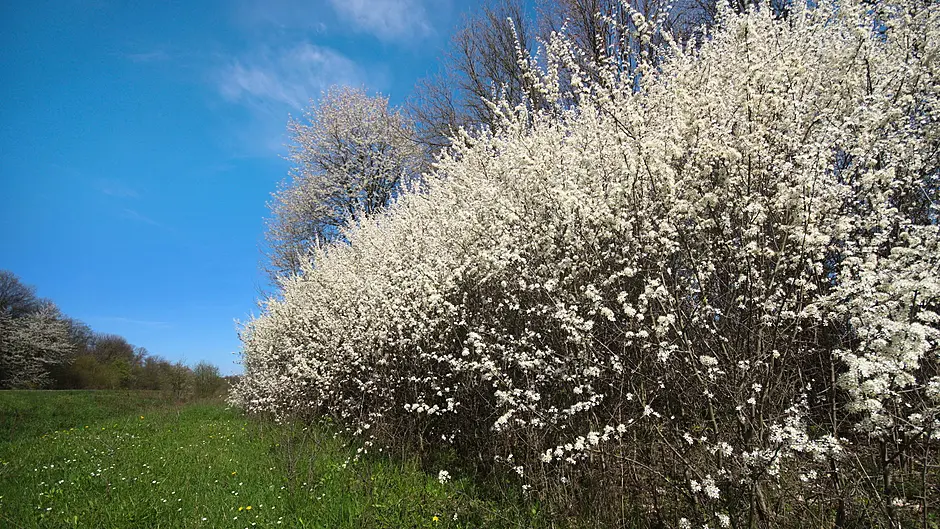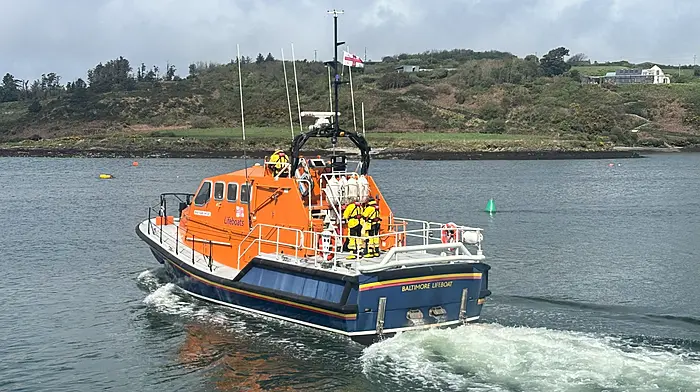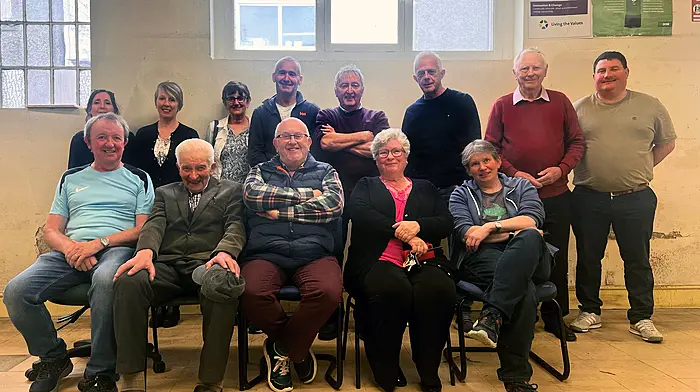Irish whitethorn is an important species that could now be under threat from disease if the importation of non-native plants is not properly controlled, writes HELEN RIDDELL.
Whitethorn, one of the most iconic trees found in the Irish landscape and renowned in folklore as the ‘May Tree’ and the ‘Fairy Tree’ is facing threats of a potential disease outbreak, from imported stock.
Recommended by the Department of Agriculture, Food and the Marine (DAFM) as a native species for hedgerow planting by farmers, the department has now removed the requirement for whitethorn planted under the Agri-Climate Rural Environment Scheme (ACRES) to be of Irish provenance and origin.
The department said that this change relates to whitethorn species only and does not apply to the other seven recommended hedgerow species listed in the ‘Planting a New Hedgerow’ action under ACRES.
However, increased demand from Irish farmers to plant it in hedgerows and a lack of stock in Irish nurseries, has necessitated the use of imported whitethorn.
Whitethorn is a host plant for the disease fireblight. Ireland is a protected zone for this disease which requires that all host plants entering a protected zone are subject to advance notification and must be accompanied by a specific plant ‘passport’.
EU plant passports can only be issued by professional operators who are authorised to do so by a relevant authority.
Catherine Keena, a countryside management specialist with Teagasc said that while fireblight in whitethorn poses no risk to human or animal health, it does have the potential to harm wildlife and pollinators who rely on hedgerows for shelter and food.
‘Of the 110 bird species recorded in Ireland, 55 use hedgerows with 35 species actually nesting in it, all nine bat species in Ireland fly along hedgerows, it’s also used by some bees and butterflies and 62 species of moth are associated with a monoculture whitethorn hedge so we need to think of everything that is in the hedge. Our hedges are important for food, shelter and carbon.’
Catherine stressed that it is essential to buy Whitethorn from a DAFM-registered supplier or nursery in order to prevent diseased plants being imported. ‘There are rules and regulations in place to hopefully prevent any outbreaks.’
Matt Keane who runs Future Forests, a nursery in Kealkill which has been in operation for over 35 years, outlined that all whitethorn stock bought from them is fully traceable.
‘We stock whitehorn, I bought as much Irish stock as I could which sold out very quickly. To start with, maybe they (DAFM) didn’t realise how many farmers would sign up for this scheme, but there was a major missed opportunity in not giving the main growers enough notice.’
Matt said Future Forests face regular inspections, ‘we are 100% checked on a regular basis, and had our most recent inspection only two weeks ago. I was able to show the inspectors the batch codes, country of origin and plant passports for all imported stock. We have invested heavily in an extremely robust stock control system so we have full traceability down to batches and individual plant passports. It’s crucial, you have to have that to really, to be safe.’
Catherine O’Sullivan who farms in Allihies, said she planted whitethorn around six years ago, when more than one species was permitted to be used in hedgerows,
‘I found it very easy to source at the time, I ordered it from a nursery in Wexford and I had it with in a week. I chose whitethorn that time as I needed a stockproof boundary, and being open to the elements where I live on the Beara Peninsula it’s a very hardy tree.’
Whilst there is a vigorous system in place to prevent diseased whitethorn being imported, Catherine Keena feels that ultimately it would be better if farmers were using Irish provenance species.
‘Irish provenance means plants grown from seeds collected from Irish plants growing in Ireland for the past 10,000 years. Trees of the same species adapt to different regions of Europe which means some imported whitethorn can bud burst (the process of buds emerging from their winter dormancy, ready to bloom for the new season), flower and seed at different times than native grown. Irish birds and wildlife have co-adapted with local Irish tree species.’
It is a belief echoed by Conor Nelligan, the Heritage Officer with Cork County Council who support a number of tree-planting initiatives in the county, including National Tree Week, who says that there should always be an emphasis on supporting native Irish stock.
Catherine Keena acknowledges that there will always be a need to import some plants, but in the long term an Irish industry is the only way forward.
‘It is logical that we should have a growing industry both from an economic and biodiversity point of view.
Surveys show that the hedgerow network in Ireland is over 700,000km, that’s the same distance as a return trip to the moon.
By importing plants we could be doing something that’s harming the very thing we’re trying to protect.’










